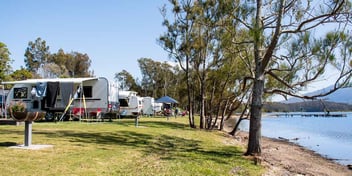Building drought resilience: a smarter approach to water security

Droughts are increasingly challenging global water resources and community stability. They are no longer predictable or manageable using traditional models.
Erratic weather patterns are exposing the flaws in long-term, probability-based planning, which can give a false sense of security. Many cities that narrowly avoided ‘Day Zero’ crises were saved only by last-minute rains – not by effective planning.
This methodology of balancing risk and cost for drought resilience includes ‘catastrophic drought’ testing – simulating extreme scenarios to identify the exact moments when new solutions, like desalination plants (facilities that turn seawater into drinkable water), should be activated.
From experience with past droughts, we know that waiting until the last minute to act can be costly and risky; instead, getting ahead of the problem with proactive value-based decision-making can help with drought preparedness.
Rethinking drought planning: don’t wait, think ahead
Drought planning needs a data-driven approach that can be applied before major crises occur.
Traditional water management typically relies on long-term averages, which can overlook the urgency of today’s increasingly unpredictable droughts. Adopting a ‘bottom-up’ approach, however, uses short-term, data-driven assessments to guide immediate decisions.
By analysing water levels at lower storage points and simulating worst-case droughts, critical moments can be identified – like when storage hits 25-35% – that trigger actions such as constructing desalination plants.
This proactive strategy ensures that, even in severe droughts, communities maintain a steady water supply while minimising the risks tied to outdated, long-term projections.
Smart spending during a drought
Acting early on drought responses saves money in the long run.
The bottom-up methodology starts with the end goal: identifying the scenarios you want to avoid and what you wish you had done earlier to prevent them. By modelling short-term probabilities and assessing economic impacts, this approach helps determine when action is worth the cost.
So, using a hydro-economic model to calculate ‘value triggers’ can reveal when early action is the most cost-effective choice. The model can include various scenarios like operating desalination plants or setting restrictions, with costs tailored to match the drought’s severity.
For example, this model shows that activating a desalination plant when water storage levels are at 35% – instead of waiting until levels drop to 25% – could reduce the social cost to the community. It may rain before the impact is felt, but at least you can demonstrate why you reacted when you did.
By planning ahead, water managers can avoid the higher social costs of last-minute restrictions and have more options available to them.
While this may mean acting earlier, it’s not about rushing decisions. Instead, it’s about demonstrating to stakeholders why that timing is the most rational choice, avoiding the pitfalls of delay or indecision.
Timing is everything: building for drought resilience
Starting projects like desalination plants at the right time is crucial for drought resilience.
A key element of the methodology is precise timing for building and operating new infrastructure. The model recommends constructing facilities based on storage thresholds to prevent critical water shortages.
For instance, constructing a 300 ML/day desalination plant when storage hits 35% reduces the probability of severe restrictions and social economic consequences.
Using this methodology you can demonstrate that waiting until 25% and/or building something smaller is not worth the risk. By starting from the bottom you know what you want to avoid, making the value of water higher and earlier decisions more defendable.
This proactive thinking avoids costly, last-minute as well as premature decisions, ensuring long-term water security and economic sustainability by balancing readiness with fiscal responsibility.
Preparing for an uncertain future
As water scarcity intensifies, adopting an agile, economically smart approach to drought resilience is crucial. This methodology blends risk management with cost-effectiveness, offering a practical framework to support resilient water systems.
By being ready to build in response to a drought, rather than simply building just in case one occurs, water systems can withstand even the harshest drought conditions.
Through a combination of probabilistic analysis and timely infrastructure planning, this approach helps water authorities prepare ahead of the next crisis, ensuring communities are safeguarded while maintaining financial and environmental sustainability.
This article was originally published by Jacobs. You can find the original here.

